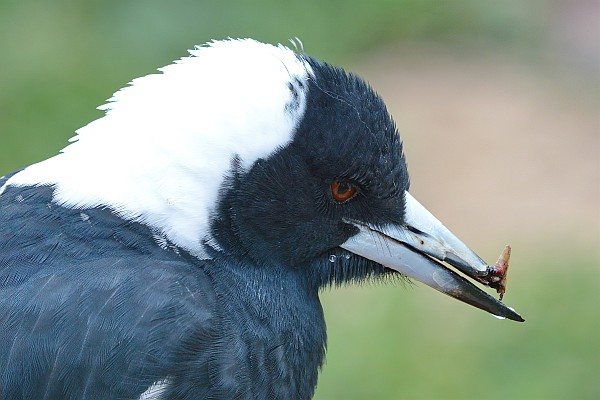A few ideas:
The visible part of all bird beaks are keratin (like our fingernails) over bone. This looks to me like damage of just the keratin. I would suggest most likely
due to an injury maybe from collision or fight. I would suggest that old age is an unlikely cause (by itself) simply because otherwise we would see it more often.
About
Are beaks capable of repair.
Certainly the keratin layer of the beak of many birds can continue growing. This is quite commonly seen in captive raptors and parrots to have overgrown beaks. Whether that extends to repair of actual damage is another question. It would of course depend on
the bird being able to survive the duration. Before I take my time typing too much, I suggest you look at for example these websites, prepared by someone presumably qualified, along with several others found in a search for “broken beaks in birds”. Most advice
is about captive birds and pets.
https://www.petmd.com/bird/conditions/traumatic/broken-and-injured-beak-birds
and
https://www.reconnectwithnature.org/news-events/the-buzz/nature-curiosity-how-do-birds-survive-with-broken
After birds die, the keratin sheath is shown to be typically quite flimsy and rather loose, it will easily splinter and fall off. I am curious why museum specimens
don’t have this happen, presumably by being kept dry.
Philip
From: Canberrabirds [
On Behalf Of Robin Eckermann via Canberrabirds
Sent: Friday, 9 April, 2021 9:10 AM
To:
Subject: [Canberrabirds] Magpie with damaged beak
The male "patriarch" of the local tribe that has been regularly in our garden for the best part of the past 20 years now has a broken upper beak - see below. He and his mate come and go regularly and over the years have bred many young in a nearby tree.
As we only moved to our present home some 20 years ago and this bird was an adult way back then, he is *at least* 20 years old.

Is this just old age - could it be disease, or the result of some physical trauma? About a week ago I saw it and the tip of its beak was still in place, though it looked to have lost the other light grey layer.
Are beaks capable of repair ... or is this likely to be a terminal condition? He currently appears to be in generally good condition, but his ability to forage for worms etc is clearly compromised.
--
Regards ... Robin Eckermann
--

